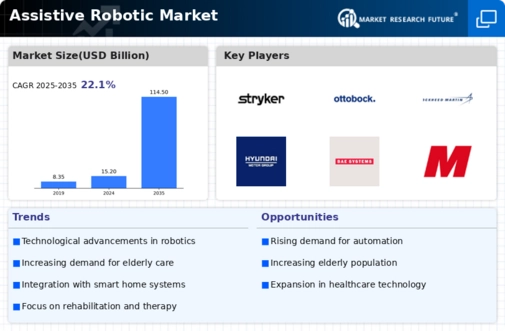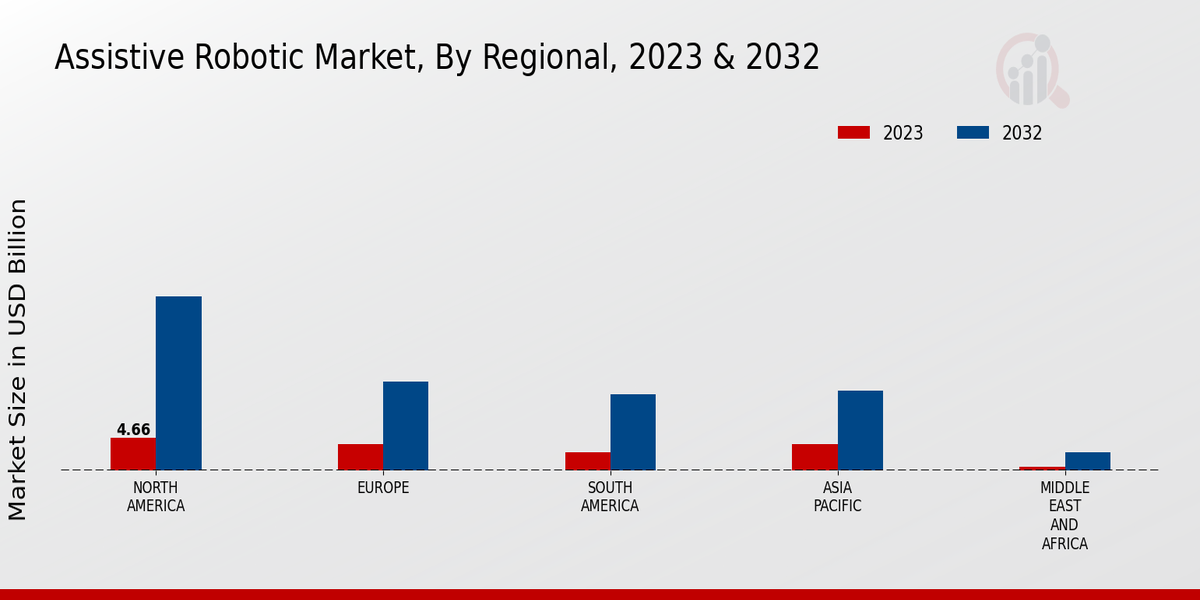Assistive Robotic Market Summary
The Global Assistive Robotic Market is projected to grow from 15.24 USD Billion in 2024 to 137.07 USD Billion by 2035.
Key Market Trends & Highlights
Assistive Robotic Key Trends and Highlights
- The market is expected to experience a compound annual growth rate (CAGR) of 20.12% from 2025 to 2035.
- By 2035, the market valuation is anticipated to reach 114.5 USD Billion, indicating substantial growth potential.
- in 2024, the market is valued at 15.24 USD Billion, laying a strong foundation for future expansion.
- Growing adoption of assistive robotics due to an aging population is a major market driver.
Market Size & Forecast
| 2024 Market Size | 15.24 (USD Billion) |
| 2035 Market Size | 137.07 (USD Billion) |
| CAGR (2025-2035) | 22.10% |
Major Players
Intuitive Surgical, Stryker, Ottobock, Bionik Laboratories, Lockheed Martin, Toyota Motor Corporation, LG Electronics, Hyundai Motor Group, BAE Systems, ReWalk Robotics, Sony Corporation, Samsung Electronics, Koninklijke Philips, Panasonic Corporation, Honda Motor Company, SuitX, Ekso Bionics Holdings

















